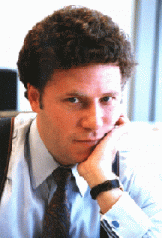How the Ironman Came to be in Kona
Early in the first millennium, Polynesians "discovered" the Hawaiian islands.
Now, the Polynesians had no compass, no sextant, and didn't even know the earth was round. For water transportation, they used rafts. Considering that the Hawai'ian islands are three thousand miles from their native Tahiti, it's fairly safe to say that they "discovered" Hawai'i by getting lost and bumping into it by accident. (This is much like the way Columbus "discovered" America, except that nine million people weren't already living in Hawai'i when it was discovered.)
Back in the day, the native Hawai'ians of Kona used to amuse themselves by building sleds of cane, greasing up the runners with ti leaves and careening down half-mile long natural lava slides at speeds up to 70 miles per hour. A spill almost always meant grievous bodily harm or death. When asked why they did this, the Hawai'ians answered, Mamaluke, which translates roughly as "Whatever."
This, of course, makes Kona the perfect place for the Ironman World Championships.
It actually started on Oahu but, at some point, the founding fathers decided that 140.6 miles of swimming, biking and running just wasn't tough enough, and that maybe they should throw some searing heat, stifling humidity and typhoon-class winds into the mix. Somebody suggested Papua New Guinea, but it was eventually decided that it might be easier to get volunteers to travel to Hawai'i than to a former British prison camp colony populated by 82 known species of venomous insect, some the size of a squeeze bottle. As it turned out, the Big Island has no poisonous fauna of any kind. It used to have poisonous snakes, but mongooses (mongeese?) were imported to get rid of them. Now the place is overrun with mongooses, but they have no venom, although the one I clipped with an errant Titleist on the number three hole at Mauna Kea looked a little ticked.
It is generally believed that the weather on the west side of the Big Island today is going to look pretty much like the weather yesterday, and that tomorrow will be no different. This is fairly accurate, except for the Queen K Highway and Route 180 between Kawaihae and Hawi. It's also a fairly windless place (which is why there's hardly any sailing available) except for the Queen K Highway and Route 180 between Kawaihae and Hawi.
About ninety percent of the bike portion of the Ironman World Championships takes place on the Queen K Highway and Route 180 between Kawaihae and Hawi. This is why comparing race times from two different years is like comparing golf scores from Pebble Beach with those from your local Pitch 'n' Putt.
As it happens, there is almost always a northerly breeze in the morning. That means that cyclists heading back to Kailua-Kona from the turnaround at Hawi have a nice tailwind to help them down the Queen K. But the wind shifts abruptly at mid-day, meaning that most of the age groupers have a headwind instead. The timing of the shift in wind direction varies from year to year. According to my wife, it happens at the precise moment that she enters the Queen K at Kawaihae. Every year. And she's done the race eighteem times. Amazingly, every other age grouper swears the same thing. (One never ceases to marvel at the power of coincidence.)
One of the hallmarks of the Ironman experience is the kinship the participants feel with the ancient Hawaiians. This cultural simpatico begins as soon as one steps off the plane at the Keahole airport. As you look up at the brilliant blue sky and cast your eyes over the cerulean waters, you have to marvel at how those primitive stalwarts managed to keep their carbon-Kevlar bikes with molybdenum tri-spoke wheels and titanium aerobars strapped to those flimsy rafts in what surely must have been some pretty rough seas.
As part of this desire to bond with the locals, a lot of people coming to Kona for the first time bone up on their Hawaiian from little books available in the airport shop on Honolulu. My first year here I bought a big book on the Hawaiian language from Amazon.com about three months before arriving. I studied it night and day, and by the time I arrived in Kona I had a pretty good working knowledge of the language. Then I discovered that I was about the only person on the Kona Coast who did. The locals looked at me cross-eyed if I said anything more complex than "Aloha." It turns out that all the Hawaiian any of the locals seem to know is what they learned from little books available in the airport shop on Honolulu. Speaking Hawaiian to the locals in Kona is like speaking Chippewa to the locals in Cleveland. Thank God the Polynesian word for "mai tai" is "mai tai." (More about the Hawaiian language in an upcoming blog.)
